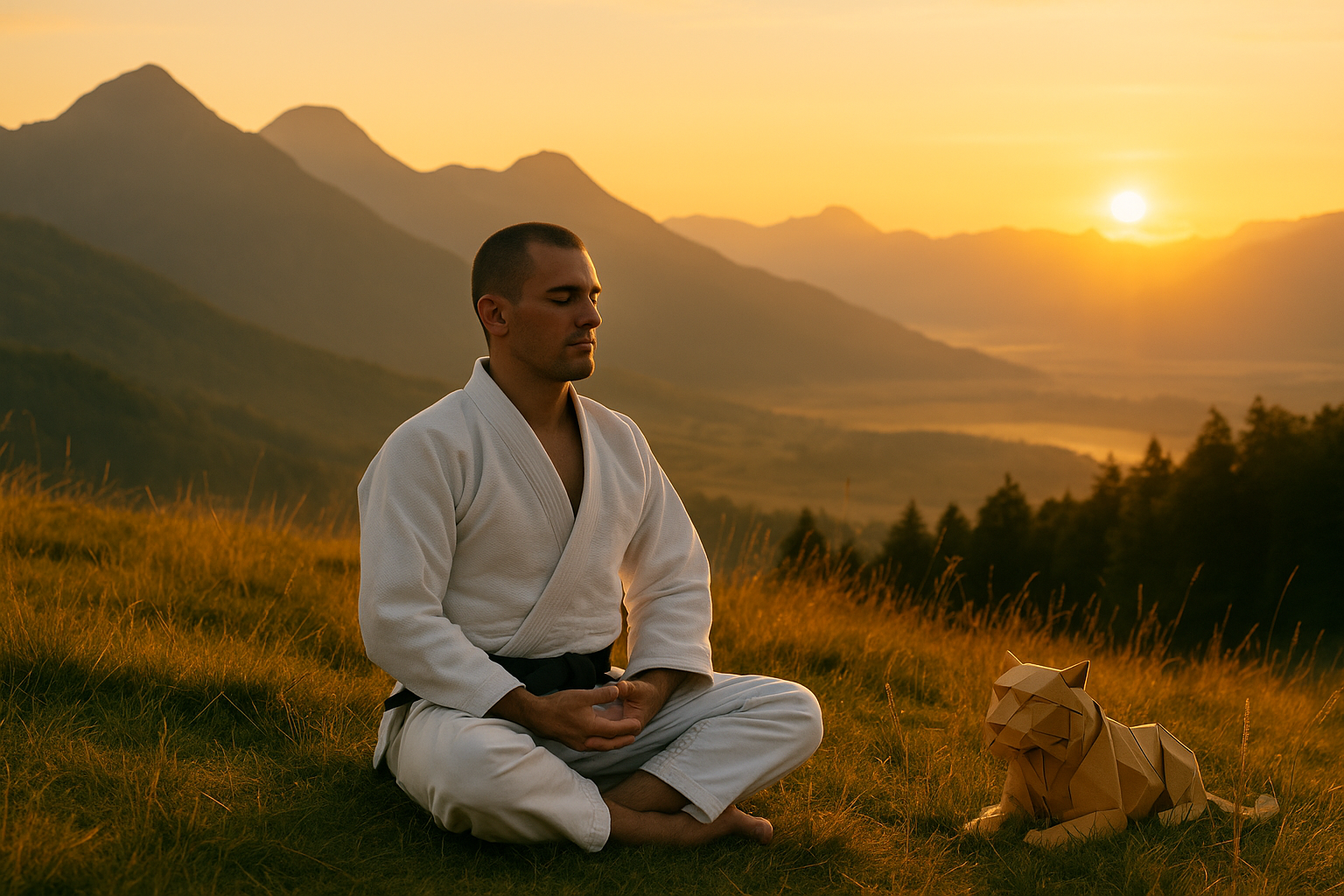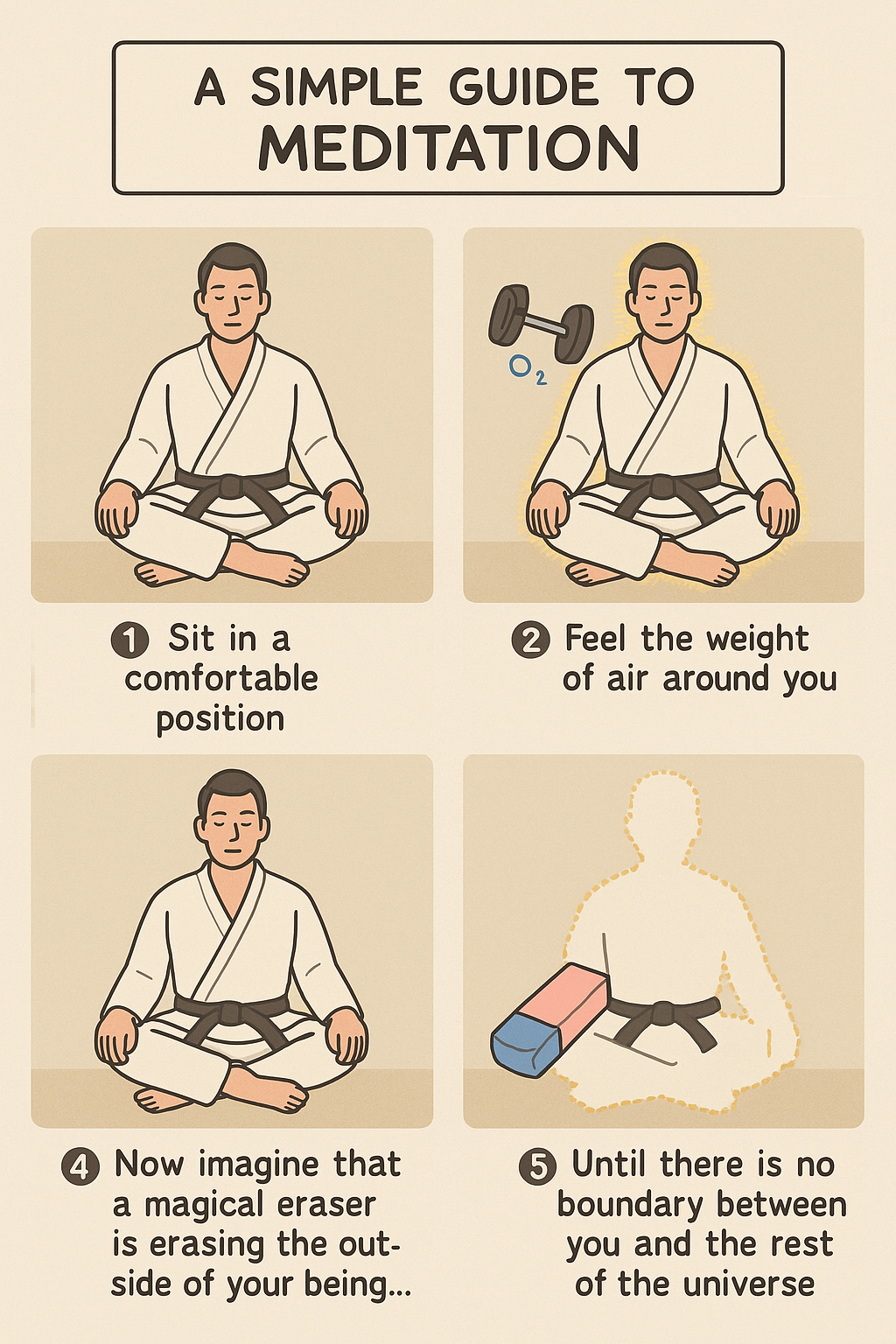
Meditation
Finding Stillness in Motion
Some of us find peace in silence. Others find it in motion — in the shuffle of feet on gravel, the rhythm of drilling in a martial arts gym, or the hiss of breath between punches on a heavy bag.
Meditation doesn’t have to mean “sitting still and doing nothing.” For a lot of us — especially those with anxiety or ADD — that definition can feel like a trap, not a tool.
Here, we unfold what meditation really is: a way to anchor your attention, regulate your nervous system, and reconnect with yourself — in whatever form that takes.
🧠 What is Meditation?
The gym is more than a place to train your body — it’s a release valve.
At its core, meditation is the practice of training your mind to focus and redirect your thoughts. It can increase awareness of yourself and your surroundings, and it’s often used to reduce stress, enhance clarity, and build emotional resilience.
🧪 Science Says:
A 2014 meta-analysis in JAMA Internal Medicine found that mindfulness meditation programs can lead to moderate improvements in anxiety, depression, and pain.
A 2018 Harvard study showed that just 8 weeks of mindfulness practice led to increased gray matter in areas of the brain associated with emotional regulation and memory.
💭 Common Myths About Meditation
When you’re out in the world — no mats, no gloves, no sparring partner — here are ways to manage overwhelm:
You have to clear your mind.
Nope. You’re not supposed to erase your thoughts — just notice them without getting pulled in.You have to sit still.
Not true. For many people, movement-based meditation is more effective at calming the nervous system.It only works if you do it for an hour.
Even 2–5 minutes can help shift your mental state.
🧘♂️ Two Powerful Forms of Meditation
1. Mindful Meditation
A classic technique used to center attention and calm the body.
How to Practice:
Sit or lie down comfortably.
Close your eyes or soften your gaze.
Focus on your breath — feel the inhale and exhale.
When your mind wanders, gently return to your breath.
As thoughts come, imagine you are sitting on a river bank, take the thought and send it floating down the river.
Start slow at first by setting a gentle timer for 2-5 minutes.
Erasing Method Meditation:
Sit in a comfortable position.
Feel the weight of the air around you.
Feel the surface of your own skin.
Now imagine that a magical eraser is erasing the outside of your being…
Until there is no boundary between you and the rest of the universe.
🧪 Why It Helps:
Studies show mindfulness improves attention and decreases cortisol (stress hormone). It’s used in evidence-based programs like MBSR (Mindfulness-Based Stress Reduction).
2. Movement Meditation
For those who feel trapped by stillness — meditation through movement may be your path.
How to Practice:
Walking Meditation
Walk slowly and listen to the gravel under your feet, feel the shift in your weight. Focus on sensation.
Try it barefoot on grass or with slow, deliberate steps.Punching Bag Meditation
Breathe out sharply with each strike. Notice the rhythm. Feel your body’s alignment. Don’t chase power — chase control.Brazilian Jiu-Jitsu Rolling or Drills
Flow drills or light rolling can become meditative. Focus on breath, timing, and connection — not dominance.Shadowboxing or Kata
Link breath with movement. Treat each rep like a moving prayer.
Cue to Start:
"What does it feel like to be in my body right now, not just in my head?"
🧪 Why It Helps:
Movement-based mindfulness has been shown to improve executive function, reduce anxiety, and increase body awareness — especially in neurodivergent populations (2016 study in Frontiers in Human Neuroscience).
Why It Matters for Unfolding Tigers
For many of us in martial arts, anxiety isn’t just in our heads — it lives in our nervous system. Meditation helps us train that system just like we train our muscles or techniques.
Whether you sit in stillness or find it in motion, meditation can:
Lower baseline anxiety
Improve recovery from training
Build emotional resilience
Help you become a better training partner (and human)
🚀 Getting Started
If you're feeling anxious:
→ Try a 3-minute walk outside with no phone. Just listen.
If you're feeling wired:
→ Do 2 minutes of slow punches or shadow movement, paired with your breath.
If you're feeling stuck:
→ Sit down and just follow 5 breaths. Nothing else.
🛠️ Tools & Resources
Apps: Headspace, Insight Timer, Balance
YouTube: Yoga With Adriene (movement), Sam Harris (mindful)
Unfolding Tigers Playlist (Coming Soon)
Future Audio Guides (Unfolding Tigers BJJ Flow Meditation, 5-min Gravel Walk Grounding)


